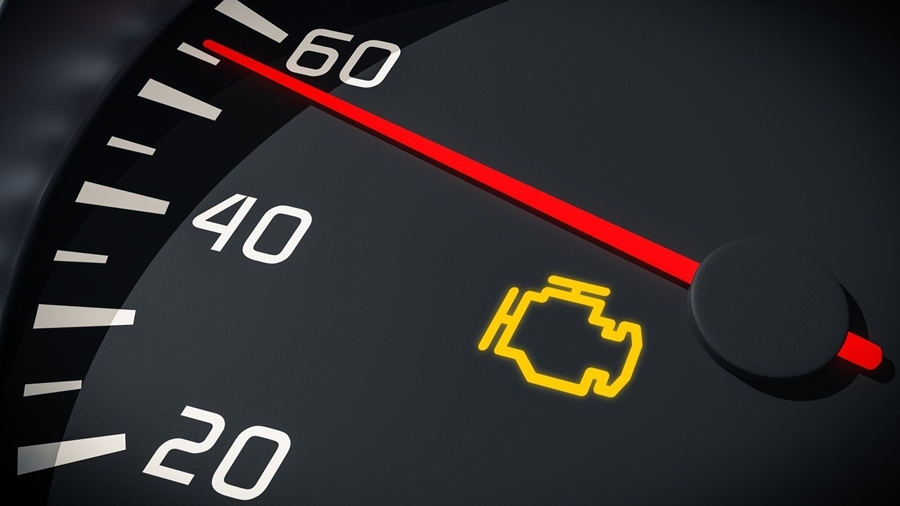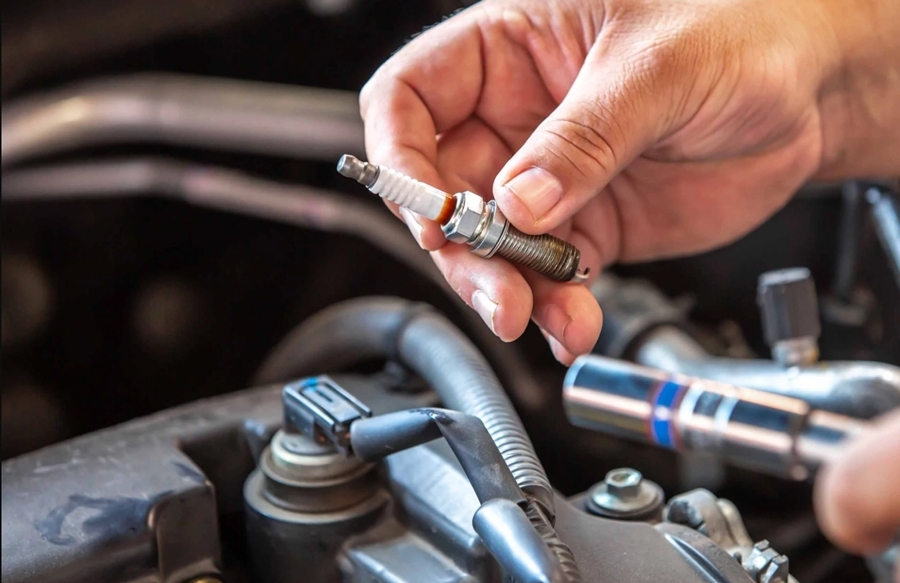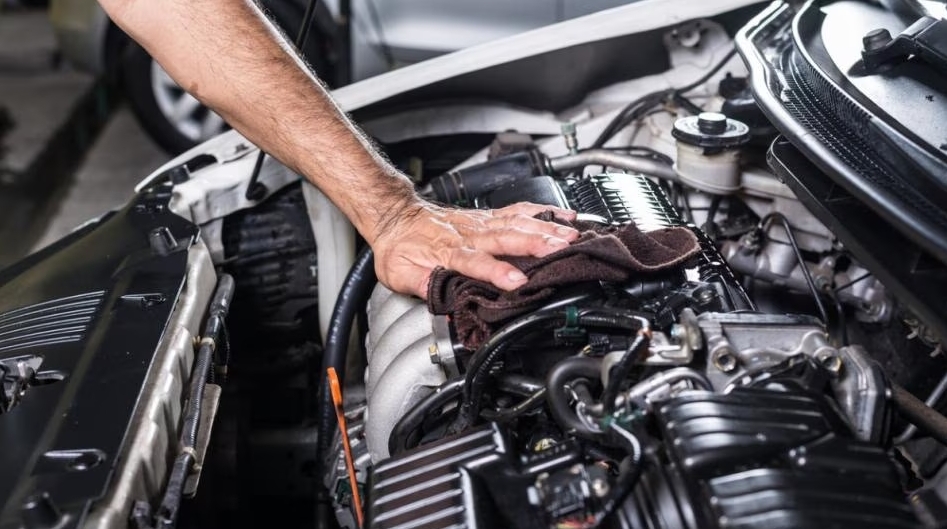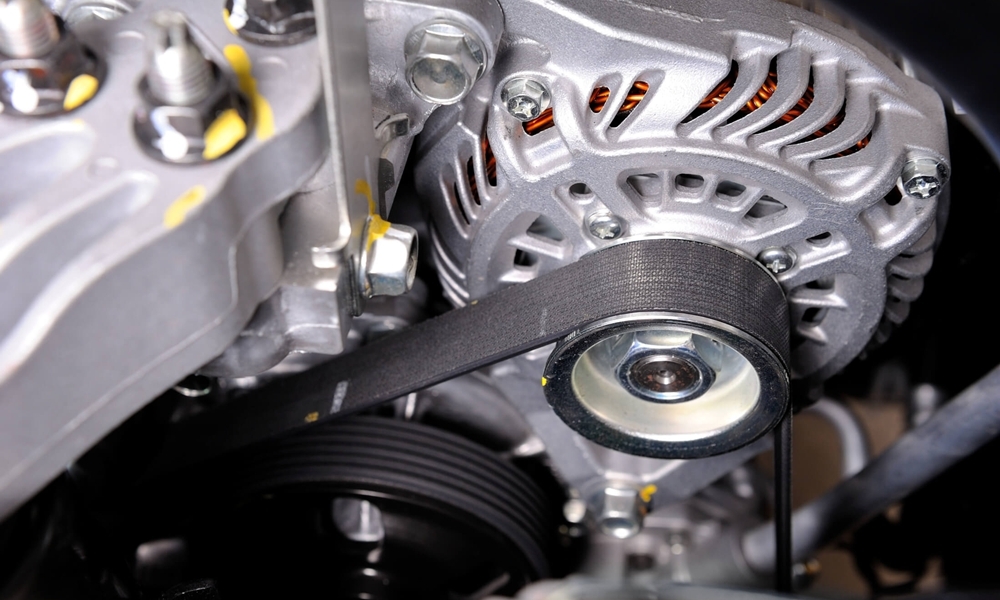Introduction: Check Engine Light Diagnosis Demystified
Check engine light diagnosis can seem intimidating at first, but it doesn’t have to be! One minute you’re cruising down the road, and the next—bam!—that dreaded orange icon lights up your dashboard. It’s enough to make anyone feel uneasy. But here’s the good news: understanding what that warning really means isn’t as complicated as it might seem.
In fact, according to CarMD, more than 65% of check engine light alerts could be diagnosed at home using a simple scanner. That’s a big deal—because it means you might be able to save time, money, and stress just by learning the basics of check engine light diagnosis. It empowers you to take control instead of panicking or heading straight to the mechanic without a clue.
Need a mechanic? Find one on the Mobile Mechanic Directory
If you’ve ever felt confused, worried, or even annoyed when the check engine light pops on, you’re definitely not alone—and you’re in the right place. This guide is designed to break everything down in simple terms, so you know what steps to take next.
In this article, I’ll walk you through everything you need to know about check engine light diagnosis. We’ll cover what triggers the light, how to use a diagnostic scanner, common error codes, and when it’s best to call in the professionals. Whether you’re a hands-on DIYer or someone who just wants to understand what your mechanic is talking about, this guide will help you feel more confident every time that little light comes on.
What the Check Engine Light Means and Why It Comes On
When the check engine light appears, it’s your car’s way of saying, “Hey, something’s not quite right.” At the heart of this alert is your vehicle’s engine control module (ECM)—the computer that monitors essential systems like emissions, ignition timing, and fuel delivery. When something falls outside of normal operating parameters, the ECM logs a diagnostic trouble code and turns on the light.
Often, the culprit behind the warning is something small. Believe it or not, a loose gas cap can trigger the light because it allows fuel vapors to escape. Similarly, a faulty oxygen sensor can send incorrect data to the ECM, throwing off the air-fuel ratio and causing efficiency issues. These are among the most common triggers behind a check engine light diagnosis, and they’re often easy to fix once identified.
It’s also important to recognize what kind of warning you’re getting. A solid light generally signals a non-urgent issue, like a mild sensor malfunction. But a flashing light? That’s your car saying, “Stop driving now!” It typically means there’s a serious misfire or something that could cause immediate damage to the engine or catalytic converter.
Emissions-related problems are a big part of check engine light diagnosis as well. Components like the catalytic converter, EVAP system, and mass airflow sensor all play a role in keeping emissions in check. If any of them fail or malfunction, the ECM will flag the issue to maintain compliance and efficiency.
Sometimes, the root cause is deeper—spark plug failures, fuel injector problems, or even transmission and timing system faults. Whatever the cause, a proper check engine light diagnosis gives you the insight you need to fix the problem before it turns into something more costly.
Common Causes Behind the Check Engine Light Diagnosis
When your check engine light pops on, it can mean a wide range of issues—some minor, some more serious. That’s why a proper check engine light diagnosis is so important. Your vehicle’s engine control module (ECM) is sensitive and monitors a network of sensors and systems, any of which can trigger that little orange warning. Let’s take a look at some of the most common culprits behind it.
Oxygen Sensors and Mass Airflow Sensors
Oxygen sensors measure the amount of oxygen in your exhaust, while the mass airflow sensor gauges how much air enters your engine. Both are vital for achieving the ideal air-to-fuel ratio. If either sensor fails or gives inaccurate data, the ECM may adjust fuel delivery improperly. This can lead to reduced performance, increased emissions, and yes—a triggered check engine light.
Catalytic Converter Problems
Your catalytic converter is essential for reducing the harmful gases coming out of your tailpipe. If it becomes clogged, cracked, or fails entirely, your vehicle won’t run efficiently and may even fail emissions testing. It’s a common reason behind a check engine light diagnosis, especially if your car has high mileage or has suffered long-term misfires.
Spark Plug or Ignition Coil Issues
Misfiring engines are often the result of worn-out spark plugs or failing ignition coils. When these components break down, fuel doesn’t ignite properly, causing a rough idle, decreased gas mileage, and more emissions. If left unaddressed, misfires can even damage your catalytic converter.
Fuel System and EVAP Failures
Fuel injectors are responsible for spraying fuel into your engine’s combustion chambers. If they get clogged or fail, the engine’s performance suffers. Similarly, a malfunctioning EVAP system (which controls fuel vapor emissions) can trigger a warning light—even something as simple as a loose gas cap can do it.
Transmission and Timing-Related Errors
Your ECM doesn’t just monitor the engine—it also keeps tabs on the transmission and timing systems. If these are out of sync or failing, it could affect overall performance and emissions, resulting in a warning and the need for check engine light diagnosis.

Tools You Need for a Check Engine Light Diagnosis
Getting to the bottom of that glowing check engine light doesn’t have to mean a trip to the mechanic—at least not right away. With a few essential tools, you can perform a check engine light diagnosis from your own garage or driveway. Today’s tech makes it easier than ever to get insights into what your car is trying to tell you.
Choose the Right OBD2 Scanner
The heart of any DIY check engine diagnosis is the OBD2 scanner. These tools plug into your car’s onboard diagnostic port—usually located under the dashboard—and communicate directly with the engine control module. Basic scanners will read and clear trouble codes, giving you a starting point. More advanced options provide live data streams, sensor readings, and even perform system tests. Some pricier models can even diagnose ABS and airbag issues.
Smartphone Apps vs. Handheld Readers
Modern car tech has also gone mobile. Bluetooth OBD2 adapters paired with smartphone apps like BlueDriver, FIXD, or Torque turn your phone into a powerful diagnostic tool. These apps often provide code definitions, repair suggestions, and maintenance tracking. However, handheld readers tend to be quicker to use and don’t rely on a charged phone or Wi-Fi connection—making them a solid choice for reliability and durability.
Understanding Diagnostic Trouble Codes (DTCs)
Once you pull a code like P0171 or P0420, the next step in check engine light diagnosis is understanding what it means. Many scanners offer built-in definitions, but a quick online search can help explain the symptoms and common causes. These codes are your roadmap—they don’t tell you exactly what to fix, but they point you in the right direction.
Dive Into Real-Time Data and Freeze Frame Info
For a deeper diagnosis, some tools offer real-time engine data like RPM, oxygen sensor readings, and fuel trims. Freeze frame data is another gem—it captures a snapshot of engine conditions at the moment the fault occurred. This can be incredibly useful when dealing with intermittent issues or hard-to-catch symptoms.
When it comes to reliable check engine light diagnosis, the right tools make all the difference—and they’re more accessible than ever.
Step-by-Step: How to Diagnose the Check Engine Light at Home
When that check engine light comes on, your mind might race to worst-case scenarios—but the cause is often more manageable than it seems. Follow these steps for an effective check engine light diagnosis at home:
Step 1: Start with the Oxygen Sensor
One of the most frequent issues behind a check engine light is a faulty oxygen sensor. This sensor monitors oxygen levels in your exhaust and helps regulate your vehicle’s air-fuel mixture. If it malfunctions, your car may burn more fuel than necessary or emit higher pollutants.
Step 2: Check the Mass Airflow Sensor
The mass airflow (MAF) sensor determines how much air enters the engine. If it’s dirty or failing, your engine may idle rough, hesitate, or experience poor gas mileage. A faulty MAF sensor sends incorrect data to the ECM, which can throw off your engine’s performance.
Step 3: Inspect the Catalytic Converter
Catalytic converters help reduce harmful emissions. When they become clogged or start failing, your vehicle may feel sluggish or fail an emissions test. Early detection can prevent expensive repairs since these parts are costly to replace.
Step 4: Examine Spark Plugs and Ignition Coils
Misfires caused by worn-out spark plugs or bad ignition coils are another common reason for a check engine light. These components are essential to proper combustion. Ignoring them can lead to long-term engine damage—especially to the catalytic converter.
Step 5: Evaluate Fuel Injectors and the EVAP System
Fuel injectors control how fuel enters the engine, and the EVAP system manages fuel vapor emissions. Issues in either system—like leaks or clogs—can lead to rough performance or even cause your car to stall.
Step 6: Look Into the Transmission and Timing Systems
While less common, issues with your transmission or engine timing can also cause the light to appear. If these systems affect overall performance, your ECM may log an error code that requires deeper investigation.
By working through these steps, you can often pinpoint the problem behind the warning light. A careful check engine light diagnosis not only saves you money but also helps avoid unnecessary stress or repairs down the road.
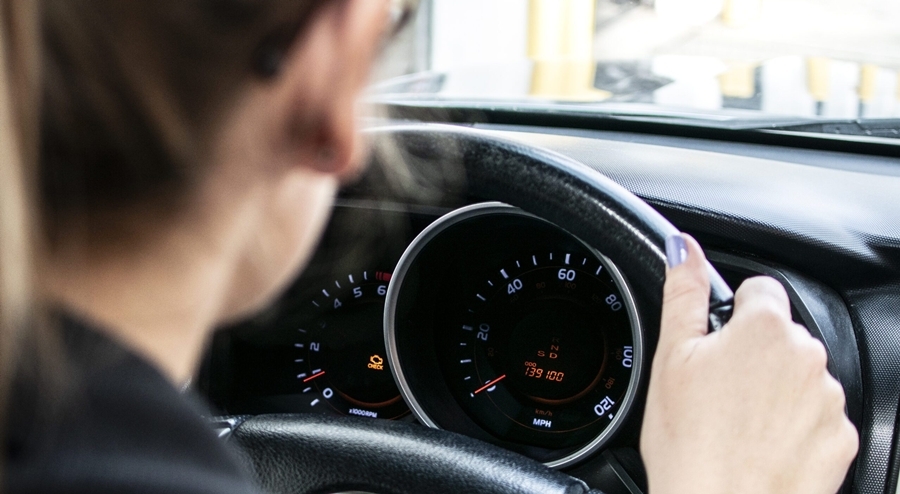
When Should You Worry? Flashing vs. Solid Check Engine Lights
Not all check engine lights are created equal. While that little amber glow is never something to ignore, how it behaves can give you a big clue about what’s going on under the hood—and how urgently you should act. This is where understanding the difference between a solid and flashing light becomes critical in any check engine light diagnosis.
A flashing check engine light is your car’s version of an emergency flare. It usually signals a severe engine misfire, which can cause raw fuel to enter the exhaust system. When this happens, it can overheat and destroy your catalytic converter—one of the most expensive components in your vehicle’s emissions system. In some cases, it can also cause internal engine damage to pistons, valves, or spark plugs. So if you see the light flashing, pull over safely and turn off the engine. This is not a situation to push through or “just get home.”
On the other hand, a solid check engine light often means there’s a less urgent issue. You can usually keep driving for a short time, but it’s still important to schedule a check engine light diagnosis soon. Minor issues like a loose gas cap or a failing sensor can become more serious (and costly) if left unchecked.
Knowing when to call a tow truck is part of staying smart and safe on the road. If your engine is shaking, making knocking noises, or losing power—especially while that light is flashing—it’s best not to risk it. A simple $100 repair today could save you from a $2,000 headache later.
Bottom line? A timely check engine light diagnosis can be the difference between a quick fix and a major repair bill.
Fixing Common Issues Triggering a Check Engine Light
When your check engine light comes on, the good news is that not every fix requires a trip to the mechanic or a big bill. In fact, some of the most common solutions are quick, affordable, and totally doable for DIYers. That’s why a solid check engine light diagnosis can save you time and money right from the start.
One of the simplest—and most overlooked—fixes is tightening or replacing your gas cap. It may not seem like a big deal, but a loose or cracked gas cap allows fuel vapors to escape, which the EVAP system detects as a leak. This tiny issue can be enough to trigger the light. Fortunately, gas caps are cheap and easy to replace in minutes.
If your engine is misfiring or running rough, worn-out spark plugs or ignition coils could be the cause. These parts wear down over time, and when they do, your engine can struggle to fire correctly. Replacing them is usually straightforward with basic tools and can dramatically improve your car’s performance.
Another common issue is a dirty or failing mass airflow (MAF) sensor. This sensor helps your engine regulate the air-fuel mixture. If it’s dirty, your car might idle rough or even stall. Sometimes, simply cleaning the sensor with MAF cleaner can fix the issue without needing a replacement.
Fuel-related problems can also be revealed through check engine light diagnosis. If you suspect a clogged injector or weak fuel pump, checking fuel pressure and injector flow can help. A fuel pressure gauge will tell you if your system is working properly.
Lastly, don’t forget the exhaust system. Faulty oxygen sensors or a failing catalytic converter can cause your engine to run poorly and trigger that light. Proper diagnostics ensure you catch these problems before they lead to bigger damage—and with the right approach to check engine light diagnosis, you’ll know exactly where to start.
Preventative Maintenance to Avoid Future Engine Light Problems
The best way to deal with engine trouble is to stop it before it starts. Staying proactive with your car’s care doesn’t just save money—it also keeps that pesky dashboard light from ruining your day. With consistent upkeep and smart habits, you can minimize the chances of ever needing a surprise check engine light diagnosis.
Stay on Top of Oil Changes and Tune-Ups
Routine oil changes and regular tune-ups are the backbone of healthy engine performance. Dirty oil and clogged filters make it harder for your engine to function efficiently. Worn spark plugs, in particular, can lead to misfires that trip the check engine light. Keeping up with your maintenance schedule ensures your engine runs smoothly and reduces the risk of problems escalating.
Inspect Sensors and Wiring Periodically
Many check engine light issues are caused by faulty sensors or loose electrical connections. Over time, heat and vibration can loosen plugs or corrode wiring. A quick visual inspection during oil changes or service visits can help catch these issues early. You don’t need to be a mechanic to spot a frayed wire or a disconnected plug—just a little awareness can go a long way.
Use Quality Fuel and Don’t Overfill
Using cheap or contaminated gas can lead to carbon buildup, dirty injectors, and sensor failures. Also, topping off your fuel tank after the pump clicks off might seem harmless, but it can damage the EVAP system, triggering a check engine alert. Stick to reputable fuel stations and stop filling when the nozzle shuts off.
Scan for Codes Before They Become Lights
Even if your check engine light isn’t on, scanning your car’s computer during routine service intervals can help catch hidden trouble. Early check engine light diagnosis can detect small issues before they become expensive repairs—and it gives you peace of mind every time you start your car.
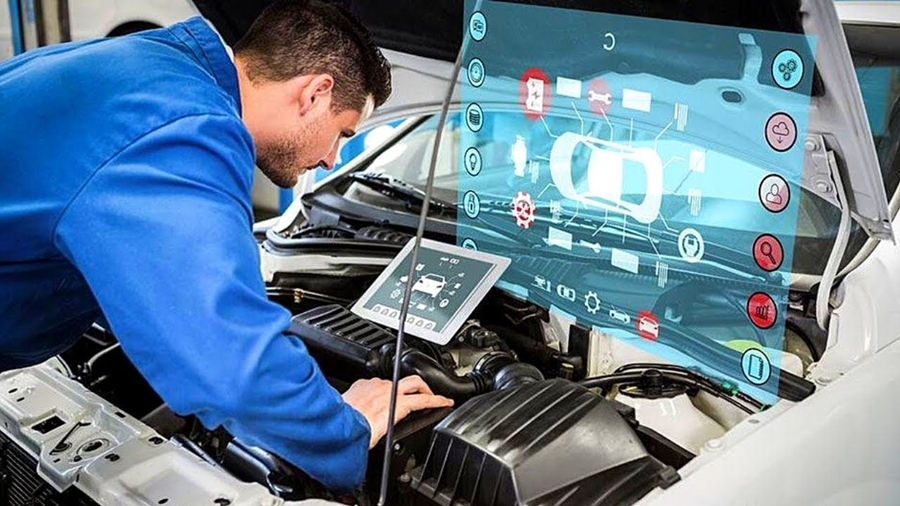
When to Take It to a Pro for Check Engine Light Diagnosis
While it’s great to handle minor car issues yourself, there comes a point when it’s smarter—and safer—to hand things over to a professional. Not every problem can be solved with a quick scan and a YouTube tutorial. In fact, some situations absolutely call for expert-level check engine light diagnosis.
If your diagnostic scanner pulls up transmission-related codes or anything involving the engine control module (ECM), it’s time to call in the pros. These systems are deeply embedded in your car’s functionality, and attempting to fix them without proper tools or training can do more harm than good. Professionals have the right equipment and the experience to interpret those complex trouble codes and spot issues that aren’t always obvious.
Another red flag is when you get multiple trouble codes that seem unrelated or even contradictory. For example, you might see one code pointing to a sensor failure and another suggesting a misfire. It can be tempting to replace every part listed, but that’s often just chasing symptoms. A trained mechanic can identify the true root cause and save you from wasting time and money on unnecessary repairs.
If you’ve already tried a DIY fix—maybe replaced the spark plugs or tightened the gas cap—but the light keeps coming back, it’s a good sign there’s something deeper going on. That’s when professional check engine light diagnosis becomes a smart investment.
One major advantage of taking your car to a repair shop is access to advanced diagnostic tools. These high-end scanners can access manufacturer-specific codes and run active tests that typical consumer-level OBD2 tools just can’t perform. For tricky, ongoing problems, a pro’s insight can make all the difference in finally resolving that pesky check engine light—for good.
Frequently Asked Questions: Check Engine Light Diagnosis
Got questions about that mysterious dashboard warning? You’re not alone! Here are the most common questions people ask about check engine light diagnosis—answered in plain English.
What does a check engine light mean?
It means your car’s onboard computer has detected an issue in the engine, emissions, or fuel system. It could be something as simple as a loose gas cap—or something more serious.
Can I drive with the check engine light on?
If it’s a solid light, it’s generally okay to drive short distances. But you should still get a check engine light diagnosis as soon as possible. If it’s flashing, pull over immediately and shut off the engine—this indicates a more critical issue.
How do I reset my check engine light?
You can use an OBD2 scanner to clear the code—but only after fixing the underlying issue. Don’t just clear the light and hope it stays off. Proper check engine light diagnosis ensures you’re not ignoring something important.
What are the most common causes of the check engine light?
Loose or faulty gas caps, worn spark plugs, failing catalytic converters, and malfunctioning oxygen sensors top the list.
What scanner should I buy for check engine light diagnosis?
A basic OBD2 scanner under $50 can do the job. Look for one that displays live data—it helps you understand what’s happening in real time.
How often should I scan my car for codes?
It’s smart to do it with every oil change, or any time your car feels off—hesitations, stalling, or decreased fuel efficiency.
Does a check engine light always mean something serious?
Not always! Sometimes it’s just a minor sensor glitch. Still, getting a check engine light diagnosis early can prevent a small issue from becoming a big (and expensive) one.
Can a check engine light come on for transmission issues?
Yes. Many modern vehicles tie the engine and transmission together in diagnostics.
Is it safe to clear codes without fixing the issue?
Nope. You’ll just be covering up the problem temporarily, which can cause more damage over time.
How can I prevent the check engine light from coming on?
Stick to your maintenance schedule, use quality parts and fuel, and don’t ignore warning signs. Early attention is the best prevention!
Need a stress reliever? Read out mechanic jokes
Conclusion: Understanding the Value of Check Engine Light Diagnosis
Check engine light diagnosis isn’t rocket science—it’s really about being proactive, not panicked. That little light on your dashboard might seem like a nuisance, but it’s actually your car’s way of asking for attention. And now that you understand what it means, how to approach it, and what tools to use, you’re better equipped to handle it confidently.
Whether the fix is as simple as tightening a gas cap or something more involved like replacing a sensor, knowing the basics of check engine light diagnosis empowers you to save time, money, and stress. Instead of dreading that orange glow, you can approach it with a calm, informed mindset.
Just remember: ignoring the warning won’t make it go away—it can lead to bigger issues down the road. So next time that light comes on, don’t panic. Take a breath, grab your scanner (or talk to a trusted mechanic), and get to the root of the issue.
Staying informed is one of the best ways to stay safe on the road. Keep learning, stay curious, and your car will thank you for it. Safe travels!

